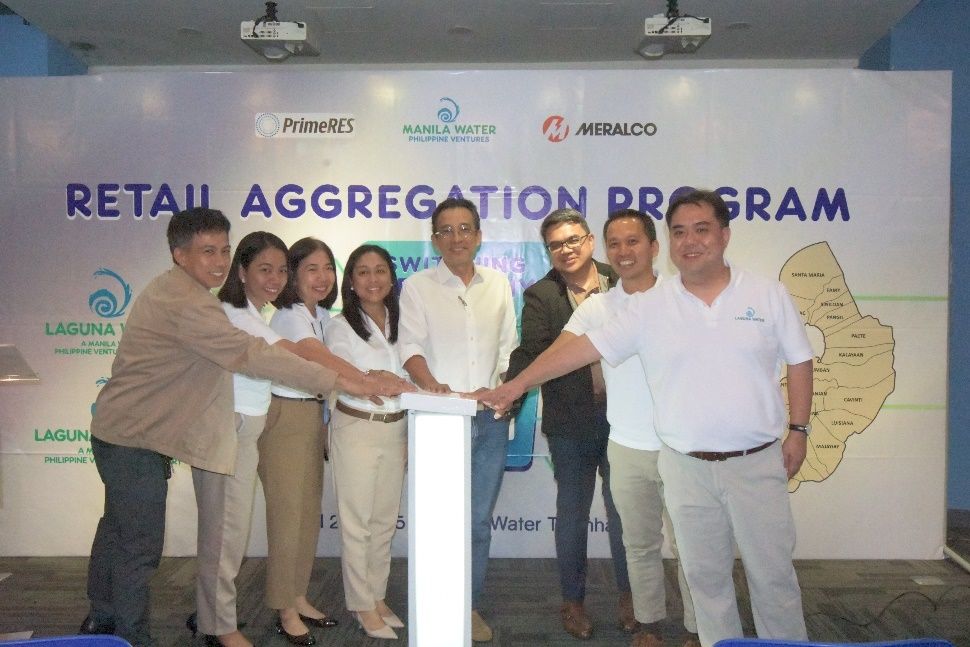
Razon-led Manila Water Co. has announced the activation of two of its non-east zone units under the retail aggregation program (RAP).
In a statement on Thursday, April 24, MWC said that its Laguna Water and Laguna Aquatech (LARC) have transitioned to RAP. This program, established by the Energy Regulatory Commission (ERC), allows multiple facilities to combine their demand to reach a 500-kilowatt (kW) threshold. This aggregation empowers them to select their own power supplier and negotiate electricity rates.
Under this program, LARC will consolidate 25 of its facilities, totaling 900 kW, and Laguna Water will combine 67 facilities with a 4.3-megawatt (MW) power demand. Their power will be sourced from Razon-led PrimeRES Energy Corporation and distributed through Manila Electric Company (Meralco).
“This transition enables Laguna Water and Laguna Aquatech to significantly reduce power costs, a major component of water production expenses,” Manila Water stated.
Through this recent adoption of retail aggregation, LARC aims to secure more cost-effective water rates while also reinvesting in service enhancements, infrastructure development, and sustainability programs.
Jocot de Dios, president and chief executive officer of Manila Water, expressed his hope to extend this initiative to the company’s other water utilities, noting, “There’s more that we need to connect and other initiatives that we need to pursue with our partners as well.”
He further added, “I think this is the spirit of really proclaiming not just in our country but in the international audience, how we can collaborate with partners, with power utilities and retail electricity suppliers, how we can make sustainability front and center of our water operations.”
Monalisa Dimalanta, ERC chairperson and chief executive officer, commended Manila Water’s ongoing efforts to integrate its units into RAP.
“It’s inspiring to witness RAP’s expansion beyond Metro Manila. With Laguna Water and LARC following Manila Water’s lead in making this switch, we are advancing toward a more competitive and consumer-focused power sector,” she commented.
Dimalanta further encouraged other utilities to view this retail aggregation transition as a valuable opportunity, adding, “The greater the participation in RAP, the stronger the competition becomes, which translates to better prices and more options for everyone.”
“This significant initiative sets a new benchmark for energy-efficient water utility operations, highlighting Laguna Water and LARC's commitment to sustainability, affordability, and operational excellence, ultimately ensuring a reliable, cost-effective, and environmentally responsible water supply for the residents of Laguna,” Manila Water concluded.
In February, Manila Water pioneered the launch of RAP for water facilities by aggregating its facilities, including the Heroes Hill sewage treatment plant (STP), FTI (South) STP, Kalayaan STP, San Mateo (North) STP, East Avenue lift station, Road 5 (Project 6), Mahabang Parang lift station, UP Diliman STP, Diego Silang STP, and Olandes STP in Marikina, to transition into retail aggregation.